Grow Mandevilla (Rocktrumpet) for Easy Summer Color
Updated: Feb. 28, 2024
Big, beautiful mandevilla blooms open their trumpets to hummingbirds and other pollinators, making this flowering vine a summertime favorite.
On This Page
Mandevilla Care and Growing Tips
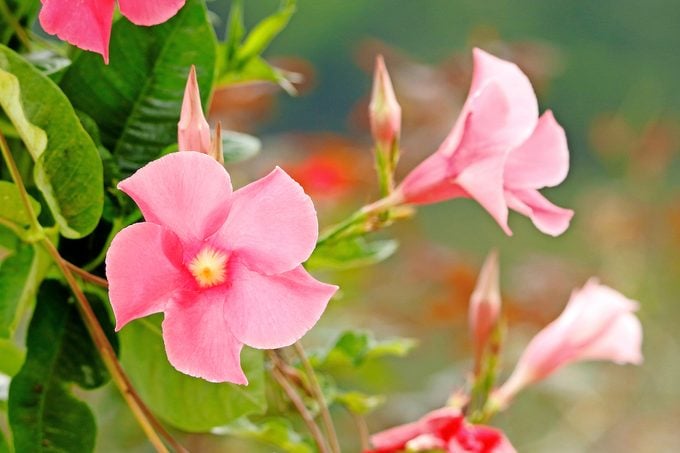
- Scientific name: Mandevilla spp.
- Common name: Rocktrumpet
- Zones: 9 to 11 or Annual
- Light needs: Full sun to part sun
- Water needs: Moderate
- Soil: Rich, well-drained
- Size: 1 to 20 feet tall and wide
- Attracts: Birds, bees and butterflies
This bloom-laden vine is a showstopper wherever it grows, and many summer gardens feature baskets or trellises full of its trailing flowers. The blossoms themselves spread several inches across, with a deep trumpet shape that hides nectar at its base. You’ll find this charmer available in red, pink, white, yellow, and more, all with glossy green foliage that’s attractive all on its own.
“Mandevilla blooms nonstop from spring to fall,” says Justin Hancock, horticulturist at Costa Farms. “Thanks to its subtropical nature, it holds up to heat and humidity better than a lot of traditional annuals, so you can count on it to continue putting on a show. It also has a good amount of drought tolerance and doesn’t require pruning or deadheading, making it a delightfully low-maintenance addition to the garden.”
Mandevilla (rocktrumpet) can be a hungry plant, and will benefit from regular applications of fertilizer, especially in nutrient-poor soils. Choose a fertilizer high in phosphorus to encourage blooms, and feed it every two weeks throughout the summer.
Grow these tropical plants for a lush outdoor oasis.
Is Mandevilla an Annual or Perennial?
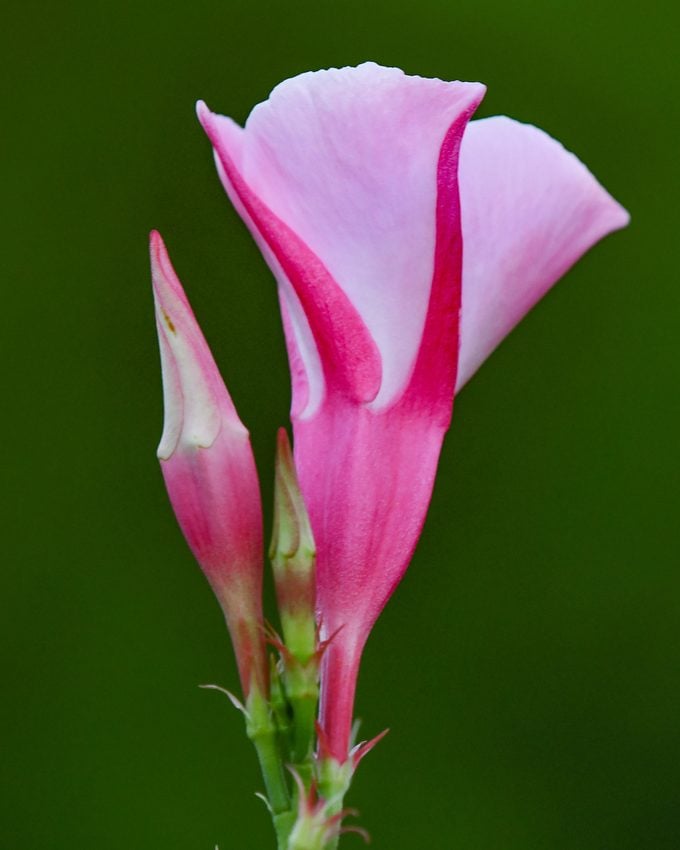
This subtropical species requires fairly warm temperatures year round and can’t tolerate frost. That means in most climates, people grow it as an annual. But in frost-free zones (9 and higher), you can treat this plant as a perennial, as long as you provide a little protection when night temperatures drop below 50 degrees.
Some people bring rocktrumpet indoors to overwinter, but it can be a little finicky as a year-round houseplant. “Back when I lived in Iowa, I had a mandevilla I brought in every winter,” Justin says. “I kept it in front of a west-facing window and it regularly produced flowers throughout the winter. Unless you have a really high-light spot inside, I wouldn’t recommend it as a year-round houseplant, but it’s easy enough to keep from year to year.”
Get expert tips on how to overwinter non-hardy bulbs and tropical plants.
When and Where to Plant Mandevilla
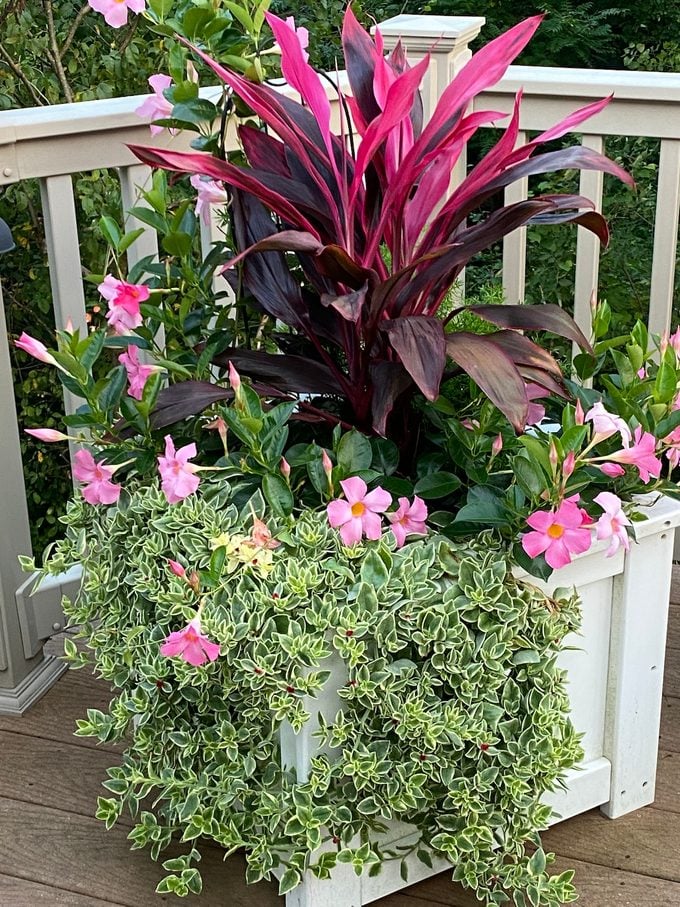
Plant mandevilla outdoors when daytime temperatures are in the 60s or higher, with nights in the 50s and up. Justin explains, “Mandevillas want all-day sun in a warm or hot spot, and well-draining soil. Fungal diseases can occur when it’s planted in wet, heavy soils. If you have heavy clay, you can usually avoid this pretty easily by planting in containers or raised mounds to help improve drainage.”
Justin also notes that while most people think of this plant as a vine, there are newer cultivars that have a mounding growth habitat instead, reaching only about 18 inches tall and wide. If you’d prefer to grow it in a border, look for the mounding types instead of vining types. Otherwise, provide something for it to climb on, or put it in a high-hanging pot to trail down.
Grow these nectar-rich potted flowers and plants for hummingbirds.
Do Hummingbirds Like Mandevilla?
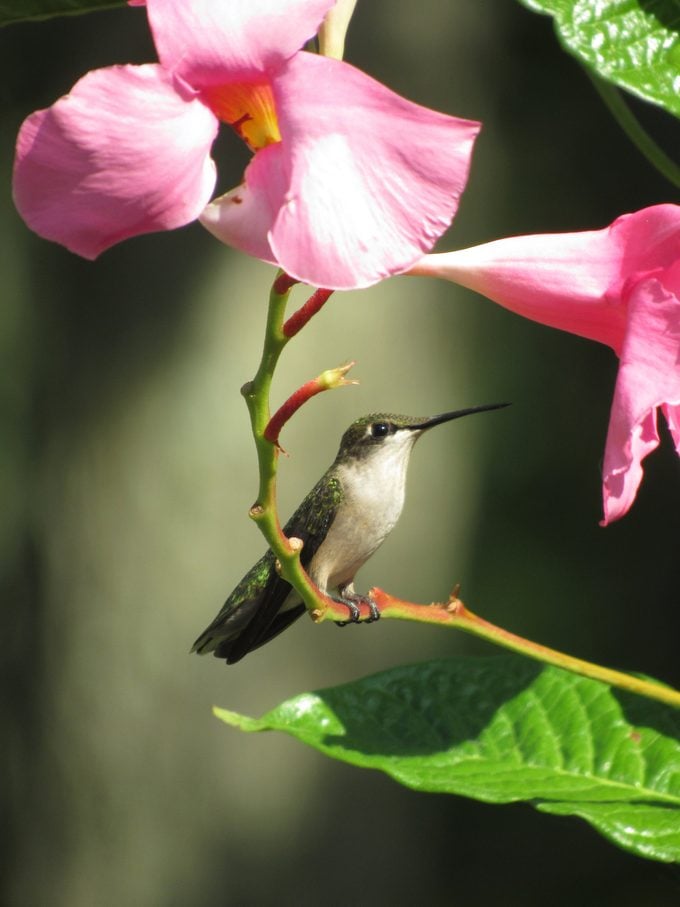
Many people plant mandevilla specifically for the pollinators it attracts, like hummingbirds, butterflies and bees. In fact, it’s one of our top picks for vines that attract hummingbirds!
Mandevilla Pests and Diseases
In addition to being subject to fungal disease when grown in wet, heavy soils, this blooming vine can occasionally be bothered by spider mites, though Justin says they’re usually not a major issue. If you do encounter them, he suggests some solutions. “Spraying the plant’s foliage with water every day for a couple of weeks is a natural way to help combat spider mites; you can also use an insecticidal soap or miticide,” Justin says.
In some areas, oleander moth caterpillars can cause serious defoliation. But in general, this beloved plant is relatively pest-free in most gardens. And even better, it’s deer and rabbit resistant. (Note that this plant exudes a toxic sap, so wear gloves when handling and keep it away from kids and pets.)
Discover easy ways to use vining plants all around your garden.
New Mandevilla Varieties to Grow
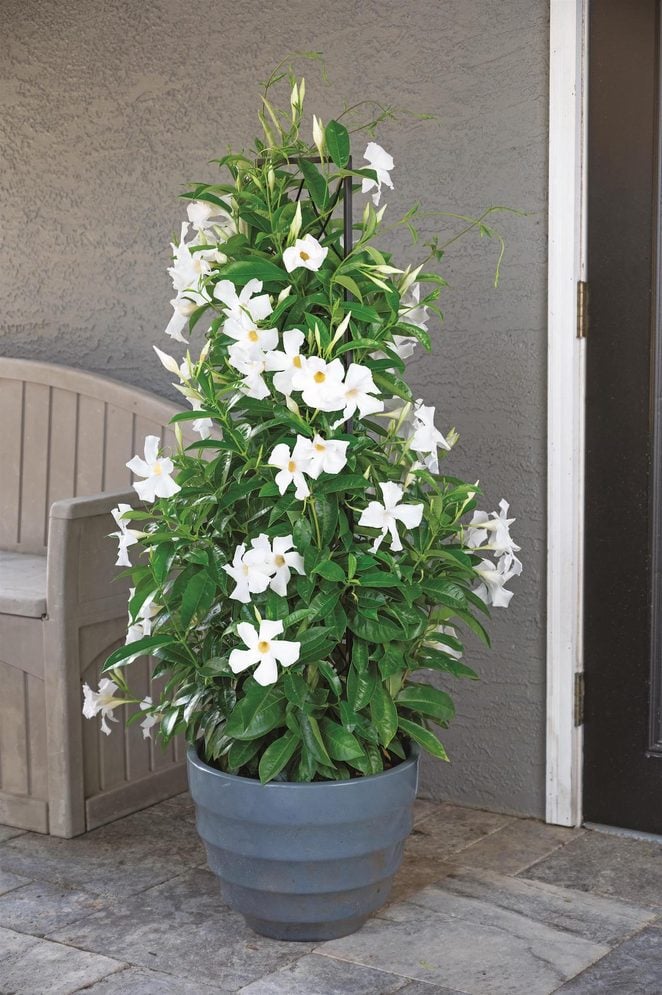
The Sun Parasol series is especially popular with gardeners, with flowers available in pink, red, white, yellow, and a lovely new delicate apricot shade that’s sure to be a hit. Justin also recommends keeping an eye out for Sun Parasol Bluephoria, a purple-blooming variety that’s hitting the market in limited numbers in 2024.
Next, learn how to grow trumpet honeysuckle for hummingbirds.
About the Expert
Justin Hancock is a horticulturist with Costa Farms, one of the world’s largest plant growers, known for houseplants and outdoor tropical flowers. Justin previously worked at Monrovia Plants and served on the board of directors for All-America Selections. He has a bachelor’s degree in horticultural science.
Sources
- Suntory Flowers
- Costa Farms – Mandevilla
- Clemson Cooperative Extension – Mandevilla
- Proven Winners – Sun Parasol Giant White
Why Trust Us
For nearly 30 years, Birds & Blooms, a Trusted Media Brand, has been inspiring readers to have a lifelong love of birding, gardening and nature. We are the #1 bird and garden magazine in North America and a trusted online resource for over 15 million outdoor enthusiasts annually. Our library of thousands of informative articles and how-tos has been written by trusted journalists and fact-checked by bird and garden experts for accuracy. In addition to our staff of experienced gardeners and bird-watchers, we hire individuals who have years of education and hands-on experience with birding, bird feeding, gardening, butterflies, bugs and more. Learn more about Birds & Blooms, our field editor program, and our submission guidelines.





















